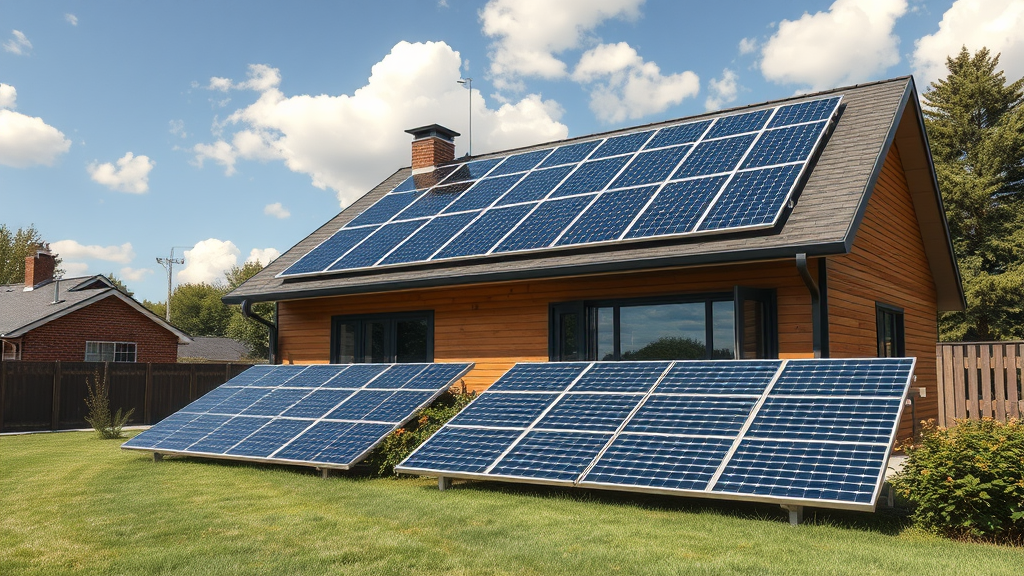Physical Address
304 North Cardinal St.
Dorchester Center, MA 02124
Physical Address
304 North Cardinal St.
Dorchester Center, MA 02124

Solar panel technology has revolutionized home energy solutions, with 2,000-watt systems emerging as a popular choice for homeowners seeking efficient renewable energy. These mid-range solar installations provide a balanced approach to reducing electricity costs and minimizing carbon footprints.
A 2,000-watt solar panel system typically consists of multiple photovoltaic panels designed to generate substantial electricity for residential use. Most configurations include:
These systems are particularly effective for small to medium-sized households, capable of offsetting a significant portion of monthly electricity consumption. The performance depends on several critical factors:
Homeowners can expect approximately 7-9 kilowatt-hours of daily electricity generation under optimal conditions. This translates to potential monthly savings of $30-$50 on electricity bills, depending on local utility rates.
| System Component | Specification |
|---|---|
| Total System Watts | 2,000 watts |
| Number of Panels | 6-8 panels |
| Annual Energy Production | 2,800-3,200 kWh |
Installing a 2,000-watt solar panel system requires professional assessment. Key considerations include:
Check out one of the top rated solar panel kits here – https://www.healthrefreshed.com/offgrid-solarkits
Additional equipment needed includes:
The average investment for a 2,000-watt system ranges from $5,000 to $7,500 before federal tax credits. Potential financial benefits include:
Recommended Resources:
U.S. Department of Energy Solar Resources
National Renewable Energy Laboratory
Maintenance involves periodic cleaning and professional inspections to ensure optimal performance. Most panels come with 25-year warranties, providing long-term reliability and peace of mind for homeowners investing in solar technology.
Check out one of the top rated solar panel kits here – https://www.healthrefreshed.com/offgrid-solarkits
Selecting the right 2,000-watt solar panel system requires careful evaluation of individual energy needs, budget constraints, and local environmental conditions. Consulting with certified solar installation professionals can help determine the most suitable configuration for specific residential requirements.
As energy costs continue to rise and environmental concerns grow, homeowners are increasingly turning to solar power as a smart, sustainable solution. A 2,000-watt solar panel installation represents an intelligent investment for those looking to reduce electricity expenses and minimize their carbon footprint.
A 2,000-watt solar system can generate significant electricity for an average household, typically producing around 8-10 kilowatt-hours (kWh) per day, depending on location and sunlight exposure. This translates to approximately 240-300 kWh per month, which can offset a substantial portion of your monthly electricity consumption.
When planning a 2,000-watt solar installation, several crucial factors impact overall performance and cost-effectiveness:
Check out one of the top rated solar panel kits here – https://www.healthrefreshed.com/offgrid-solarkits
| Factor | Impact |
|---|---|
| Roof Orientation | Optimal south-facing installations can increase energy production by 10-15% |
| Shade Coverage | Minimal shade ensures maximum energy generation |
Modern solar panels offer impressive efficiency ratings, with top-tier models converting 18-22% of sunlight into electrical energy. Monocrystalline panels typically provide the highest performance for 2,000-watt systems, offering superior energy conversion rates and longer lifespan.
Homeowners can benefit from various financial incentives that make solar installations more affordable:
Complementing your 2,000-watt system with battery storage can maximize energy independence. Modern lithium-ion batteries allow homeowners to store excess energy generated during peak sunlight hours for use during nighttime or cloudy periods.
A 2,000-watt solar installation can prevent approximately 3-4 tons of carbon dioxide emissions annually, equivalent to planting 50-60 trees each year. This significant environmental contribution demonstrates the broader impact beyond personal energy savings.
Check out one of the top rated solar panel kits here – https://www.healthrefreshed.com/offgrid-solarkits
Quality solar panels typically maintain 90% efficiency after 10 years and 80% after 25 years. This durability ensures consistent energy production and prolonged financial benefits.
For additional information and professional guidance, consider exploring these reputable sources:
Investing in a 2,000-watt solar panel system represents a strategic approach to reducing electricity costs, enhancing property value, and contributing to sustainable energy solutions. By carefully selecting equipment, understanding financial incentives, and maximizing system efficiency, homeowners can transform their energy consumption and support environmental conservation.
Embracing a 2,000-watt home solar panel system represents a strategic investment in sustainable energy and personal financial savings. These systems offer homeowners a powerful combination of environmental responsibility and economic advantage. By carefully selecting and implementing such a solar installation, you can significantly reduce your electricity bills, decrease your carbon footprint, and increase your property’s overall value.
The financial benefits extend beyond immediate energy savings. With technological advancements and decreasing solar equipment costs, 2,000-watt systems have become increasingly accessible and attractive for residential properties. Potential tax incentives, rebates, and net metering programs can further enhance the economic appeal of these solar solutions.
Check out one of the top rated solar panel kits here – https://www.healthrefreshed.com/offgrid-solarkits
Performance metrics demonstrate that a well-designed 2,000-watt system can generate approximately 8-10 kilowatt-hours of electricity daily, depending on location and sunlight exposure. This translates to meaningful reductions in grid electricity consumption and potential long-term savings of thousands of dollars over the system’s lifetime.
Homeowners considering solar energy should conduct thorough research, obtain multiple quotes, and assess their specific energy needs. Professional consultation can help optimize system design, ensuring maximum efficiency and return on investment. The transition to solar is not just a technological upgrade but a commitment to cleaner, more sustainable living.
As renewable energy technologies continue to evolve, 2,000-watt solar panel systems represent an excellent entry point for homeowners looking to harness solar power’s potential. By making this forward-thinking choice, you’re not just powering your home—you’re contributing to a greener, more sustainable future for generations to come.